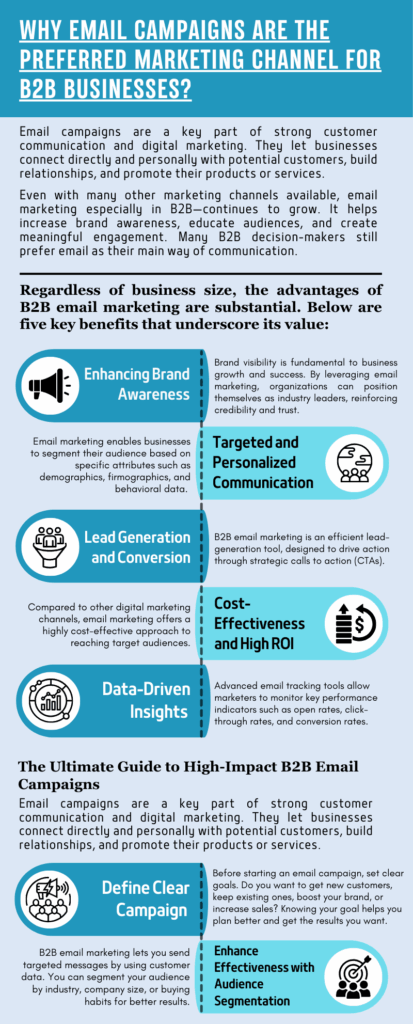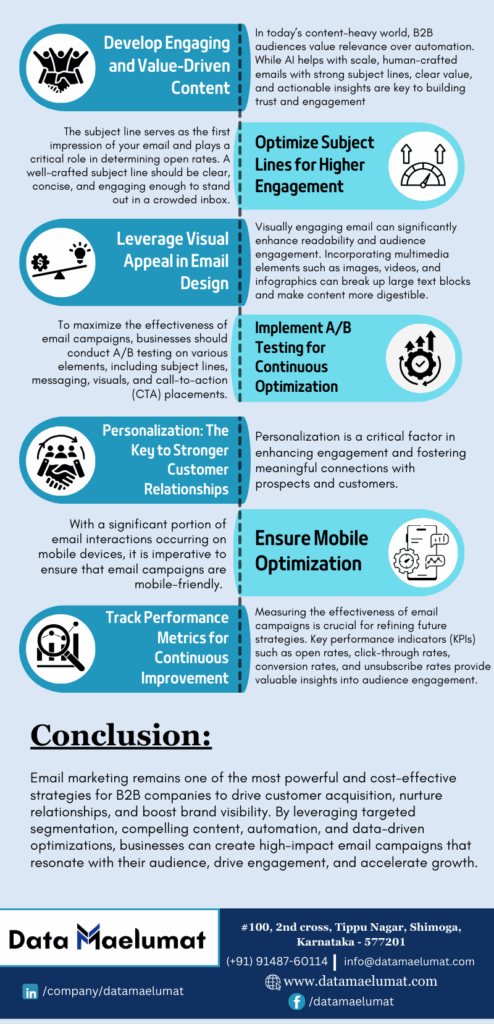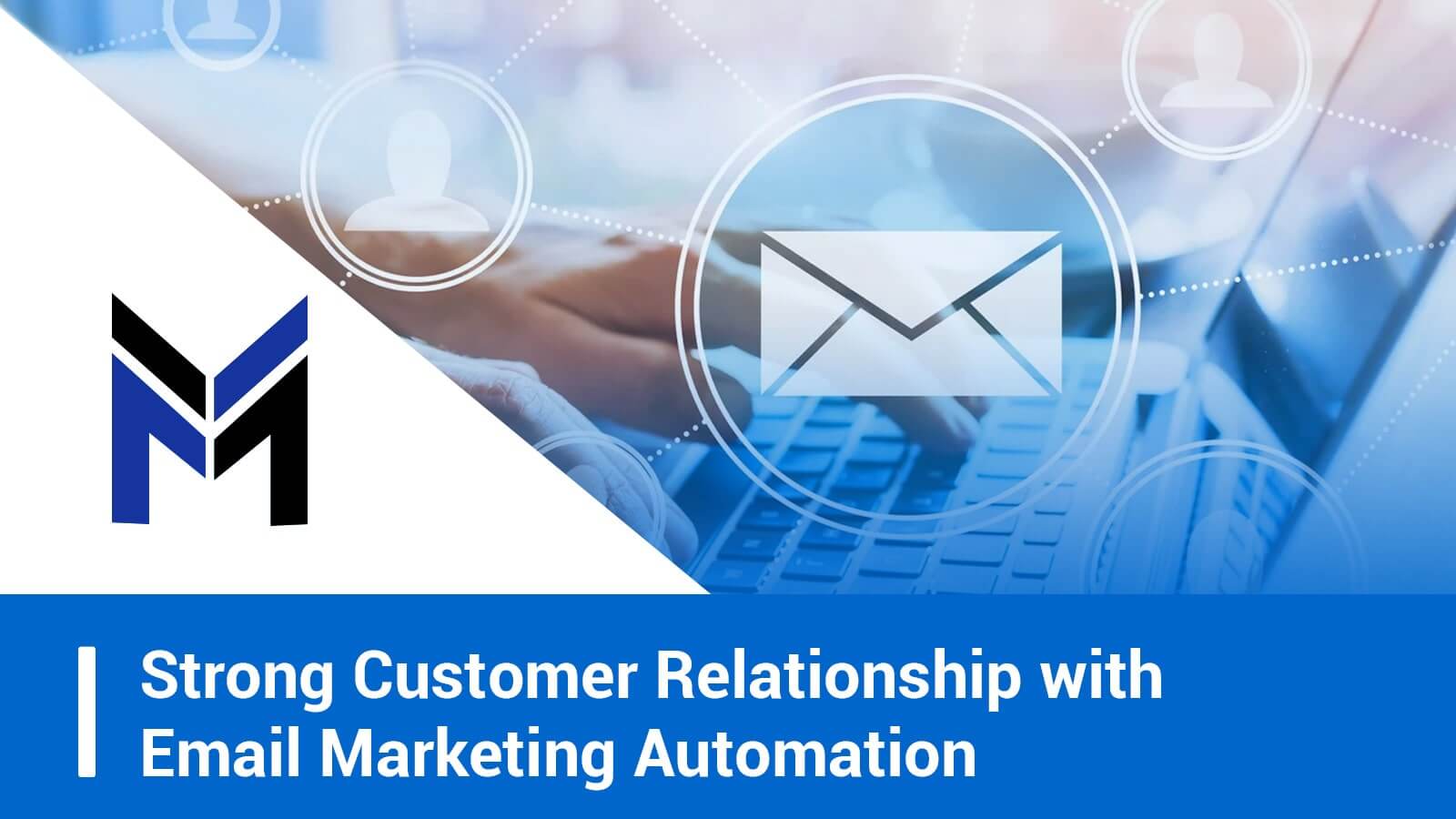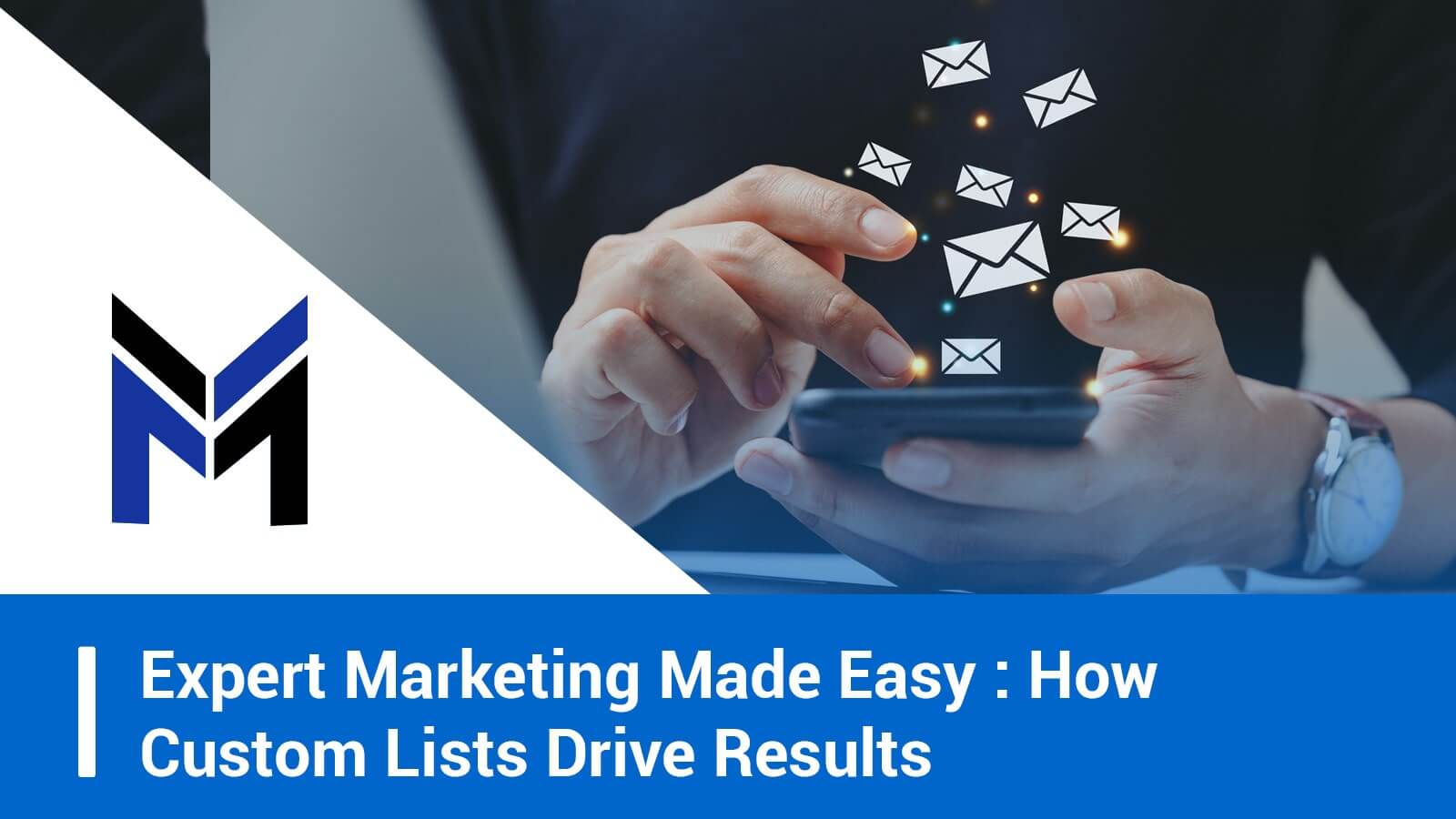

Introduction
Email campaigns are a key part of strong customer communication and digital marketing. They let businesses connect directly and personally with potential customers, build relationships, and promote their products or services.
Even with many other marketing channels available, email marketing, especially B2B, continues to grow. It helps increase brand awareness, educate audiences, and create meaningful engagement. Many B2B Email List decision-makers still prefer email as their main means of communication.
Regardless of business size, the advantages of B2B email marketing are substantial.
1. Enhancing Brand Awareness: Brand visibility is fundamental to business growth and success. By leveraging email marketing, organizations can position themselves as industry leaders, reinforcing credibility and trust.
2. Targeted and Personalized Communication: Email marketing enables businesses to segment their audience based on specific attributes such as demographics, firmographics, and behavioral data.
3. Lead Generation and Conversion: B2B email marketing is an efficient lead-generation tool, designed to drive action through strategic calls to action (CTAs). By directing recipients to dedicated landing pages, product information, or exclusive offers, businesses can cultivate prospects into qualified leads.
4. Cost-Effectiveness and High ROI: Compared to other digital marketing channels, email marketing offers a highly cost-effective approach to reaching target audiences.
5. Data-Driven Insights for Continuous Improvement: Advanced email tracking tools allow marketers to monitor key performance indicators such as open rates, click-through rates, and conversion rates.
The Ultimate Guide to High-Impact B2B Email Campaigns
For B2B businesses, email marketing serves as a powerful tool for targeted outreach and direct engagement with high-value prospects. It remains one of the most effective channels for influencing decision-makers and driving conversions. This guide explores the key elements of creating impactful B2B email campaigns & B2B Marketing Qualified Leads that resonate with your total addressable market and drive business growth.
1. Define Clear Campaign Objectives
Before starting an email campaign, set clear goals. Do you want to get new customers, keep existing ones, boost your brand, or increase sales? Knowing your goal helps you plan better and get the results you want.
2. Enhance Effectiveness with Audience Segmentation
B2B email marketing lets you send targeted messages by using customer data. You can segment your audience by industry, company size, or buying habits for better results.
3. Develop Engaging and Value-Driven Content
In today’s content-heavy world, B2B audiences value relevance over automation. While AI helps with scale, human-crafted emails with strong subject lines, clear value, and actionable insights are key to building trust and engagement.
4. Optimize Subject Lines for Higher Engagement
The subject line is your email’s first impression and key to getting it open. Keep it clear, short, and catchy. Use A/B testing to see what works best and improve results.
5. Leverage Visual Appeal in Email Design
Visually appealing emails boost readability and engagement. Use images, videos, or infographics to break up text. Make sure your design works well on all devices, especially mobile.
6. Implement A/B Testing for Continuous Optimization
To get better results from email campaigns, test different elements like subject lines, content, visuals, and CTA placement. Use the data to see what works best and improve future emails.
7. Personalization: The Key to Stronger Customer Relationships
Personalized emails boost engagement and build stronger connections. Using the recipient’s name and tailoring content to their interests shows you care—and it can lead to higher conversions.
8. Harness the Power of Email Automation
Automation tools make email marketing easier by sending timely, relevant messages based on customer actions. They help with follow-ups, nurturing, and re-engagement, saving time and improving efficiency.
9. Ensure Mobile Optimization
Since many people check emails on their phones, it’s key to making your emails mobile friendly. Use responsive design, short content, and clear CTAs to ensure a smooth experience on any device.
10.Track Performance Metrics for Continuous Improvement
Tracking email campaign performance is essential for improvement. Metrics like open rates, clicks, conversions, and unsubscribes show how well your emails are doing. Use these insights to fine-tune your content, timing, and strategy for better results.
Conclusion
Email marketing remains one of the most powerful and cost-effective strategies for B2B companies to drive customer acquisition, nurture relationships, and boost brand visibility. By leveraging targeted segmentation, compelling content, automation, and data-driven optimizations, businesses can create high-impact email campaigns that resonate with their audience, drive engagement, and accelerate growth.




